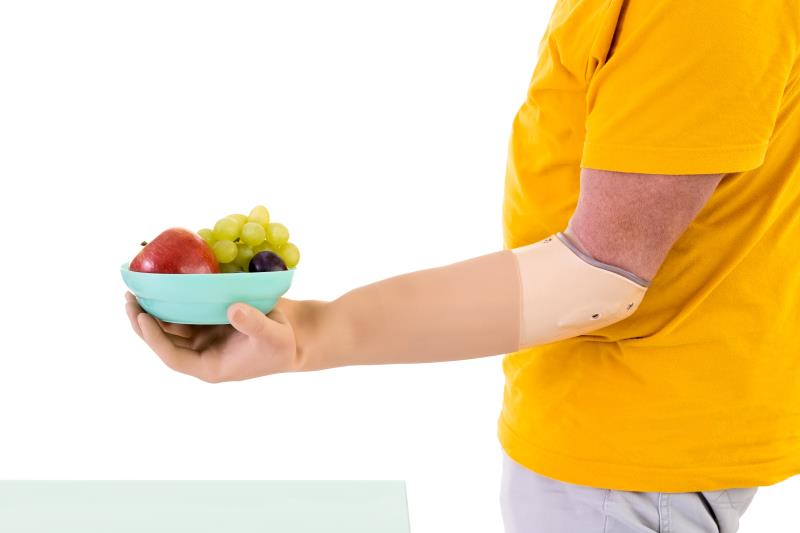Mind-controlled bionic arm prosthesis allows wearers to ‘feel’ for real





People with arm amputations can now feel with their artificial limb and get involved in more activities of daily lives, thanks to a self-contained robotic arm prosthesis endowed with a “sense of touch”, a report has shown.
Unlike conventional arm prostheses which provide no sensory feedback, the new implant system —known as the e-OPRA Implant system — enables bidirectional communication between an arm prosthesis and the brain, just like a biological arm.
This is achieved through neuromuscular electrodes implanted in the nerves and muscles of the amputation stump, which anchor the prosthesis to the skeleton in the stump through osseointegration — a process, as explained by the researchers, whereby “bone cells attach to an artificial surface without formation of fibrous tissue.”
The prosthesis is mind-controlled, meaning the electrical signals from muscles and nerves were captured by the electrodes and passed on to the prosthesis. On the other hand, force sensors embedded in the prosthetic thumb send tactile signals back to the connected nerve in the arm stump, which are then perceived by the brain.
“[In this way,] the neuromuscular electrodes provide control and somatosensory feedback to an osseointegrated arm prosthesis … allowing for intuitive use of the prosthesis in daily life,” stated the researchers.
The case report detailed three patients who received the e-OPRA Implant system to introduce a neuromusculoskeletal interface to their arm prostheses and were followed over 3 to 7 years thereafter. [N Engl J Med 2020;382:1732-1738]
Myoelectric activity was detected in two patients 4 weeks after implantation and all patients reported improved precision in prosthetic control over time.
The patients could also perceive different intensity of tactile sensation, which reportedly improved over time as well.
“Daily use resulted in increasing sensory acuity and effectiveness in work and other activities of daily life,” the researchers pointed out.
The new prosthesis has enabled the patients to engage in activities they used to enjoy such as skiing, ice fishing, canoeing, and rally-car racing.
As a result of improved functionality of the prosthesis, one of the patients has also become employed full-time.
There were no serious adverse events, bleeding, infections, or adverse events leading to discontinuation of prosthesis resulting from the implants.
Furthermore, the neuromusculoskeletal interface remained functional in all three patients even after 3–7 years of use.
“The most important contribution of this study was to demonstrate that this new type of prosthesis is a clinically viable replacement for a lost arm,” said lead author Dr Max Ortiz Catalan from Chalmers University of Technology in Gothenburg, Sweden. “Our study shows that a prosthetic hand, attached to the bone and controlled by electrodes implanted in nerves and muscles, can operate much more precisely than conventional prosthetic hands.”
“Use of the device did not require formal training and depended on the intuitive intent of the user to activate movement and sensory feedback from the prosthesis.”